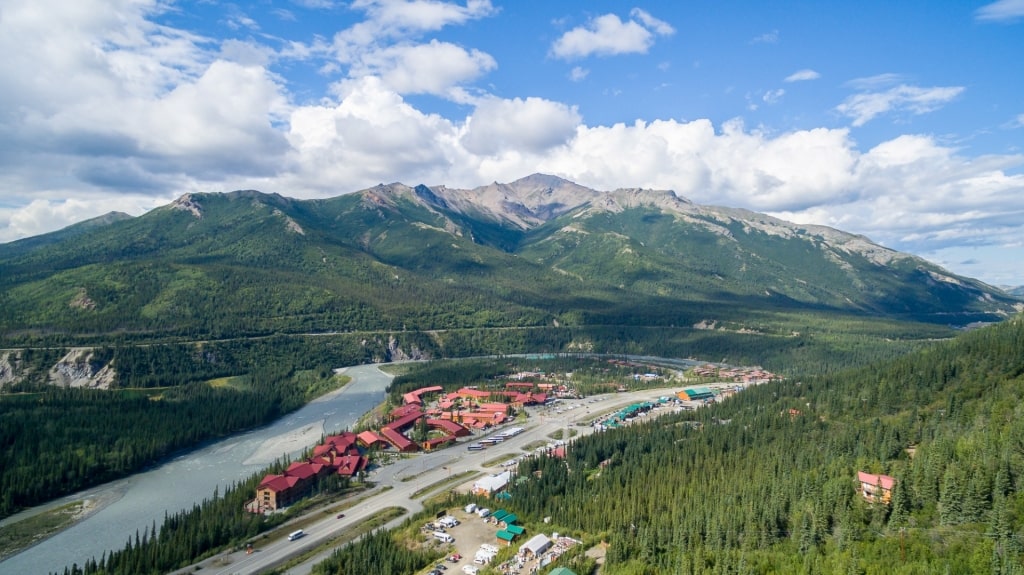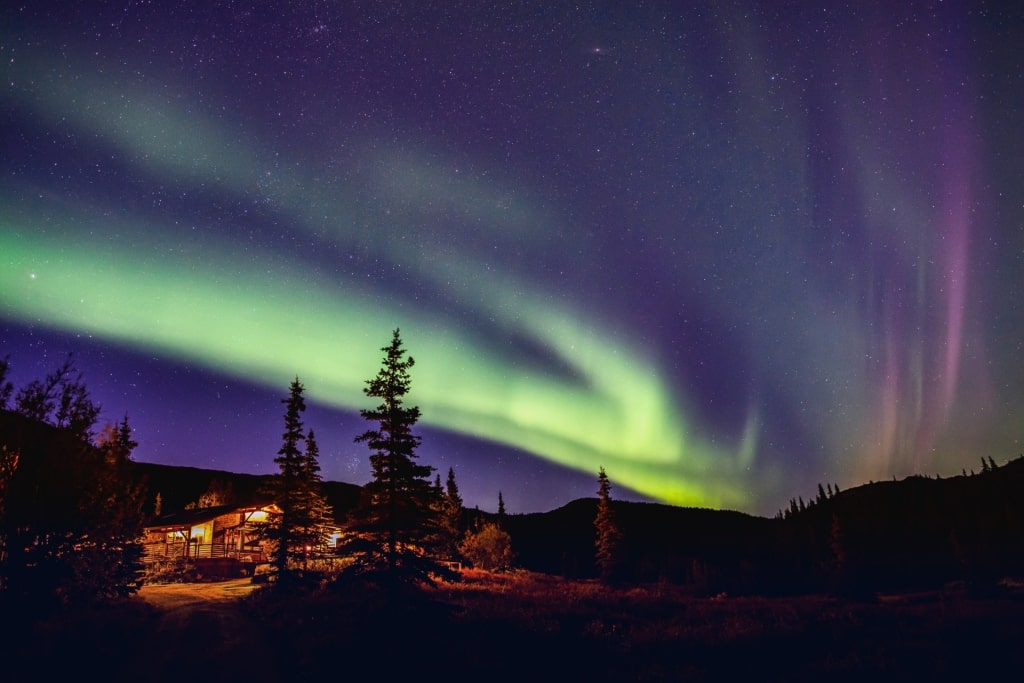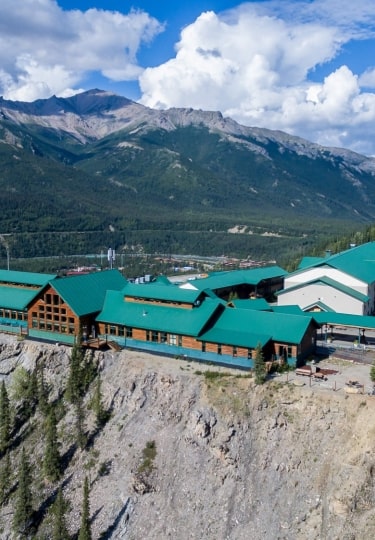The best time to visit Denali National Park, due to this destination’s northern latitude, is during the summer season. Summer typically runs from late May until the middle of September, catching the tail end of spring and the beginning of autumn.
And while the park is open all year, summer—despite more rain than other seasons—is the warmest period in Denali.
Summertime temperature averages can push above 57°F (14°C) at the high end of the scale, and even hit 65°F (16°C), which might not seem like sizzling weather to you, but compared to January averages of around 9°F (-13°C), the high season is absolutely sweltering.
Visiting Denali National Park By Season

Moose
Summer
The latter parts of May extending until mid-September are the best times to visit Denali National Park. July, for example, is the hottest month of the year here, with temperatures capable of reaching 69°F (20°C), along with 19 hours of daylight.
If you’ve come to experience the park’s incredible nature, summer, from June on is when you’ll have full access to Denali. You’ll get the chance to spot the “big five” Alaskan animals (Dall sheep, caribou, grizzly bears, moose, and wolves).
You can also bike along the park’s only road, go hiking, and pick wild berries in late summer. If the clouds part, the mighty mountain itself will be revealed in all its ice-and-granite glory.
Fall
If you can handle rapidly cooling temperatures, and you’d like the chance to see the trees change colors or catch the Northern Lights before the heavy snows arrive, autumn can be a good time to visit.
Late September, depending on the year, will offer you highs of around 43°F (6°C). Come October, though, you’ll see a big drop-off in temperatures. October average highs slide down to 30°F (-1°C), with frosty lows hovering around 18°F (-8°C).

Denali National Park
Winter
While diehard winter sports enthusiasts (snowshoeing, cross-country skiing, etc.) might want to visit Denali National Park in winter, if you don’t enjoy a deep freeze, chances are winters aren’t for you.
Temperatures can plummet down to a bone-chilling -40° F (-40°C), with winter highs still well below freezing, occasionally reaching the upper 20s Fahrenheit, or landing in the -6° to -2° Celsius range. Winter is typically the driest season, although the accumulated snowpack will severely restrict your access to the national park.
Spring
May is actually Denali’s driest month overall. Spring tends to start out fairly dry, with just under two inches (50mm) of rain on average. Rainy days increase as you head into summer.
March is still very cold, with average highs of around 25°F (-4°C), though by the time you get into May, monthly averages heat up to 43°F (6°C), or thereabouts. Snow is melting by now, and animals coming out of hibernation.
When is Rainy Season?
The rainiest time in Denali National Park is from late May until mid-October. July and August clock in as the wettest months of the year, with approximately 15 rainy days in August, and around three inches (76mm) of precipitation. Coincidentally, this is peak season. Come prepared with waterproofs.
When is High Season?
Denali’s high season corresponds with summer, the best time to go to Denali National Park. As mentioned before, the high season also matches up with the rainy season—but at least it’s not too cold.
Late May and June have the least amount of rain for this time of year, with temperatures in June and July capable of reaching highs of around 66°F (19°C), and daily averages falling in the 53-55°F (12-13°C) range. Denali’s gorgeous wildflowers bloom during summer as well, showing off their radiant colors.
When is Shoulder Season?
Shoulder season hits Denali twice a year; when spring transitions into summer, toward the end of May and early June, then again in fall, around the middle of September, and heading into October.
Shoulder weeks are perfect for enjoying wide open spaces, but you will have to deal with a reduction or closure of park services. You’ll also have to gamble with the weather, which could be unseasonably warm if you’re lucky—or unseasonably cold, causing a late thaw in spring, or an early freeze and snowfall in autumn, shutting down the park road.

Northern Lights
When is Low Season?
Denali’s low season is winter. Freezing temperatures, heavy snow cover, limited access to the icy mountainous landscape, and harsh weather make winter a less-than-ideal time to visit the park for most people. On the other hand, winter is the perfect time to see the aurora borealis light show in the dark skies above.
If you’d like to experience Denali National Park’s natural wonders for yourself, browse our Cruisetours to Denali, then book your next trip to the northern reaches of North America.



